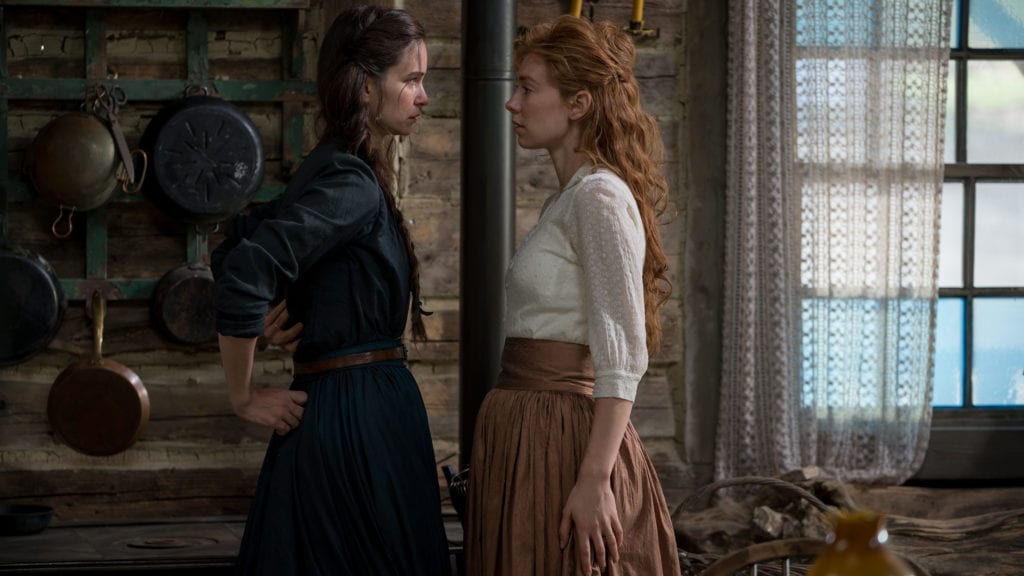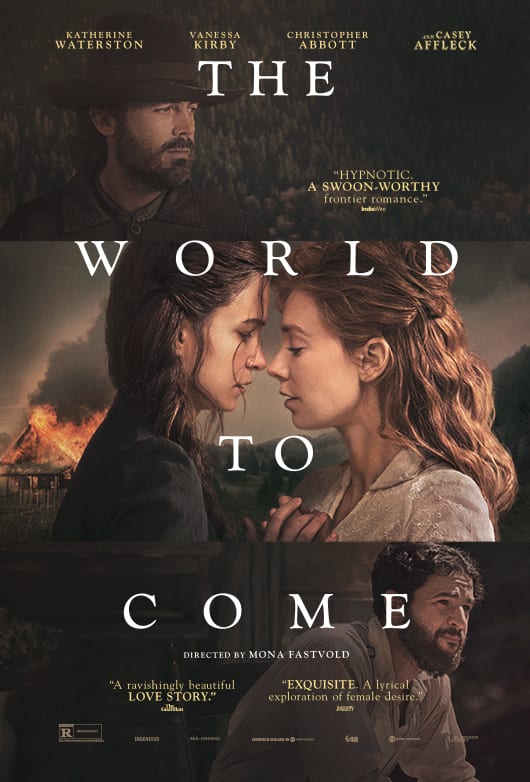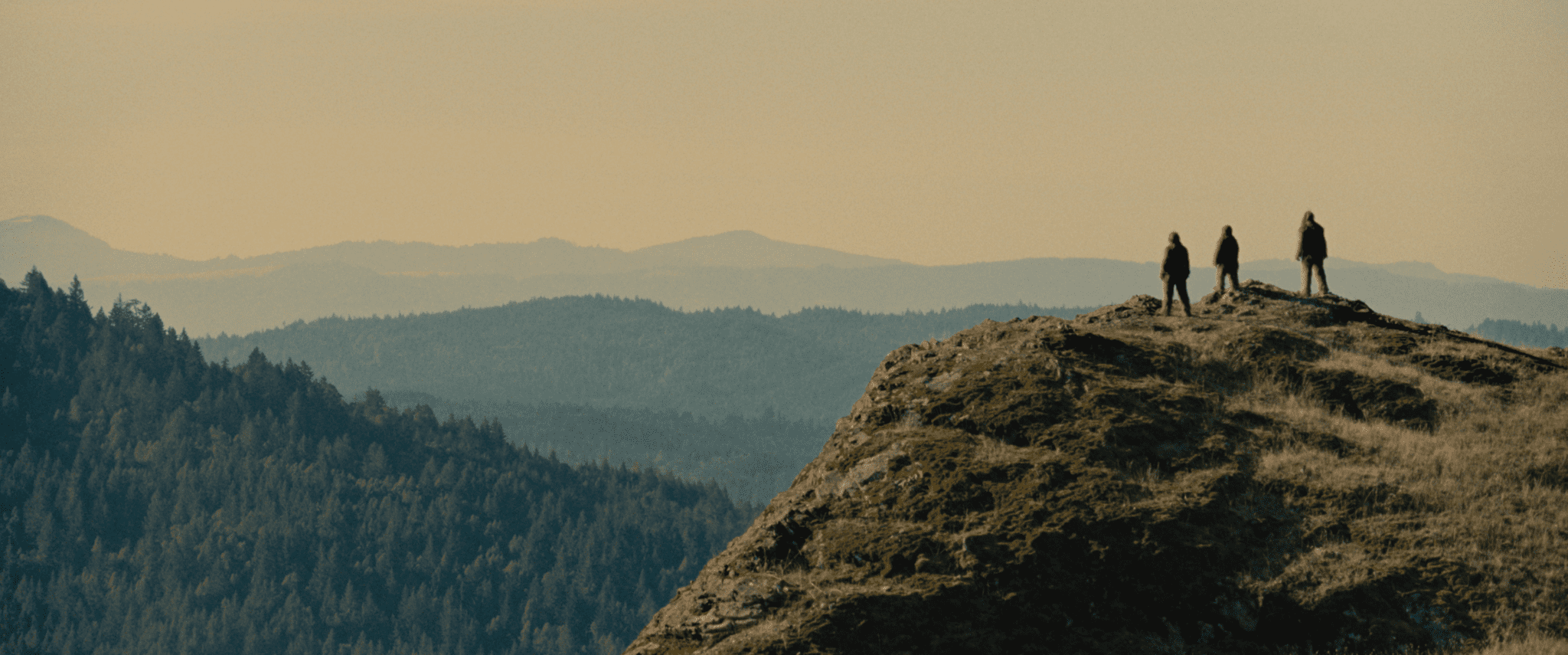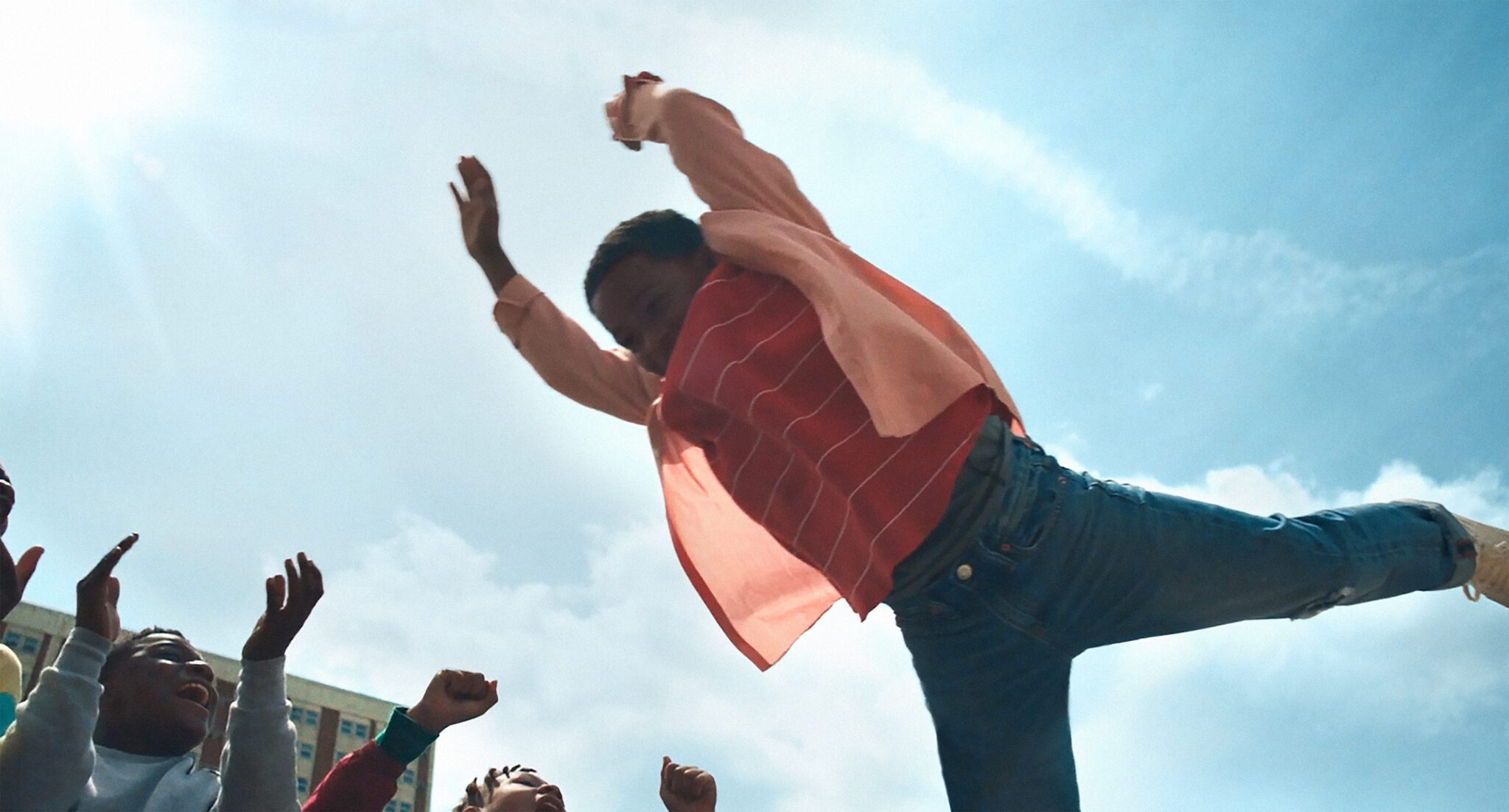?You are my city of joy.?
Mona Fastvold?s The World to Come takes us to a world that seems long past, but that reflects many of the same struggles people face today. It is a love story filled with yearning. But it also is a story of confinement and oppression.
Set in the mid-19th century, the story is told by Abigail (Katherine Waterston) who lives on a farm with her husband Dyer (Casey Affleck). She has begun to keep a journal because the ledger Dyer keeps about the farm only speaks of numbers: money, supplies, animals. It doesn?t mention the passions, fears, and griefs of their lives, and they have had many. When Abigail asks if she every shows up in Dyer?s ledger, he replies only when she creates an expense. Abigail is especially suffering from the loss of her young daughter. She says, ?I have become my grief.? They are busy with the struggle to survive the winter on the farm, but there seems to be little affection or warmth in their relationship.

As spring arrives, a wagon goes by with new leasers for the neighboring property. In the few seconds they are stopped, Abigail is immediately drawn to the beautiful young wife, Tallie (Vanessa Kirby). Tallie?s husband Finney (Christopher Abbott) is controlling and demanding. He expects his wife?s submission in every way. He is very free in quoting scripture to underline his belief. Tallie, however, is too much of a free spirit to give herself up, even with some thinly veiled threats.
In time the two women meet and create a very strong bond. Their visits fill the emptiness that each woman is experiencing. Soon Abigail?s thoughts and journal entries are constantly on Tallie. Their visits become more frequent and more intimate. They are obviously deeply in love. But the constraints of the time?and of marriage?prevent them from fully living out that love. At one point, the two women speak of their experience as prison, leading to Abigail referring to the story of King Lear and trying to view this prison (with Tallie) in a positive light. But the darkness of this confinement will in time become annihilation.
While this is the women?s story, the two men are also an interesting contrast. They, too, seem to be trapped by the world. We see that Dyer is interested in all things mechanical. Abigail says he would have loved to followed the natural sciences, but circumstances demanded he go into farming. That inclination to the mechanical and the strict accounting of his ledger may explain some of his emotional distance from his grieving wife. Finney is not only controlling over Tallie, but seeks to convey a superiority over Dyer and Abigail as well. He seems unable to form a real bond with anyone, male or female. We sense that he believes they are all below him.

The film opens in the depth of winter. That reflects very much the coldness within Abigail?s marriage and her personal life. The storms she and Dyer face are not just against the violent weather, but against the emotional tempest they are struggling to survive. As spring?and Tallie?come on the scene, the world becomes much brighter, although there are still deep shadows within the two homes when the two are apart. The gorgeous cinematography and exceptional production design help to convey all this.
The World to Come was spotlighted at the Sundance Film Festival and is coming soon to theaters (where open), then soon after that on VOD.
Photos courtesy of Bleecker Street.




